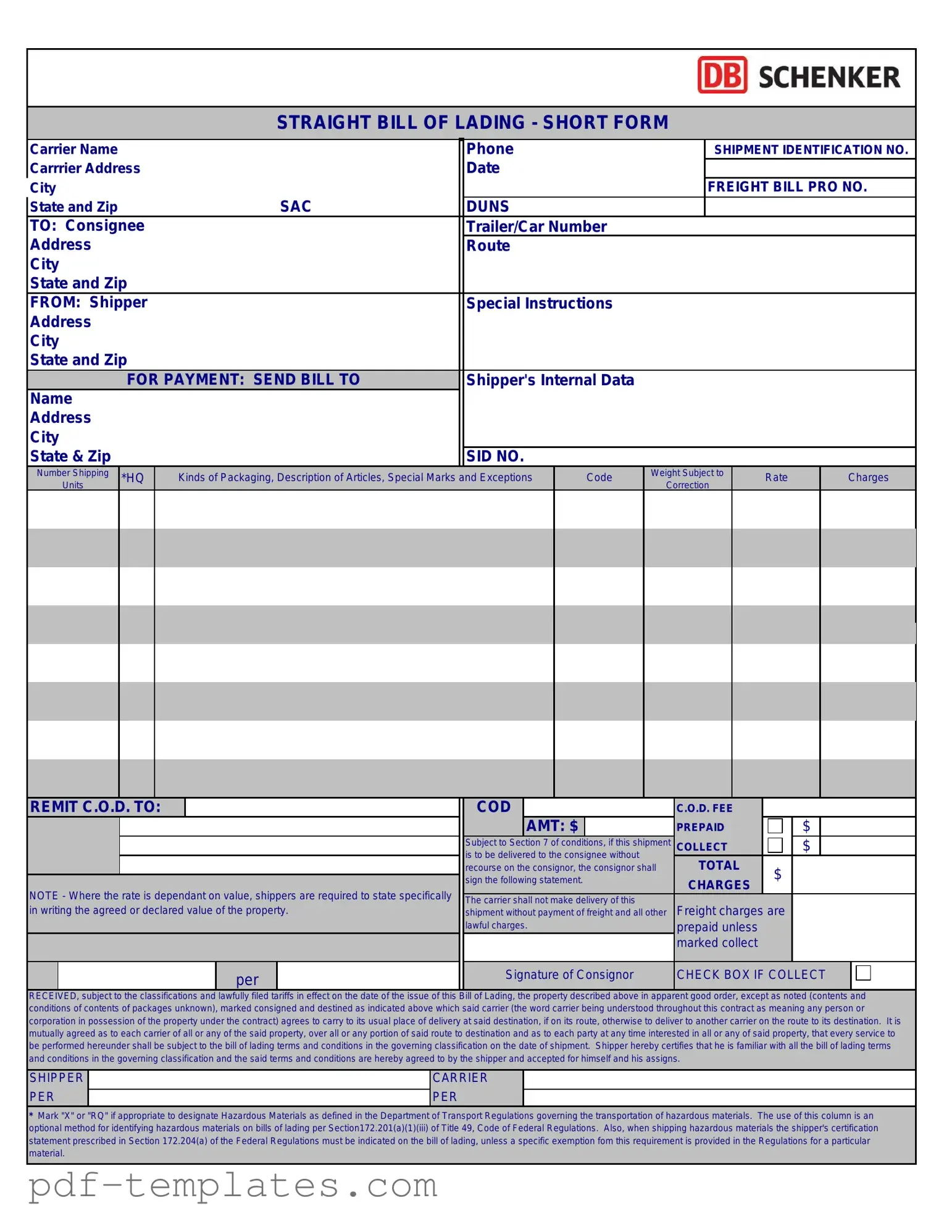The Straight Bill of Lading is a crucial document in the shipping and freight industry, serving as a receipt for goods and a contract between the shipper and the carrier. It specifies the terms under which the goods are transported, ensuring that both parties understand their responsibilities. This form is typically used when the goods are consigned to a specific person or entity, meaning that it is non-negotiable. Unlike other types of bills of lading, the Straight Bill does not allow for the transfer of ownership during transit, providing a clear chain of custody. Essential information included in this document encompasses details such as the shipper's and consignee's names, descriptions of the cargo, and any special handling instructions. Additionally, it may outline the freight charges and payment terms, ensuring transparency in the shipping process. Understanding the components and implications of the Straight Bill of Lading is vital for anyone involved in logistics, as it safeguards the interests of both the sender and the receiver while facilitating the smooth movement of goods across various modes of transportation.
